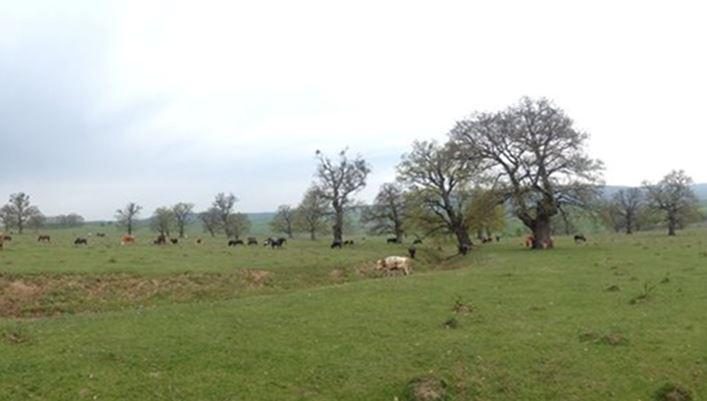
Pastagem em floresta no sul da Transilvânia, Roménia
Descrição do sistema
Muitas das pastagens em floresta no sul da Transilvânia, Romênia, foram criadas por pastagem em zonas de florestas de carvalhos fechadas e são consideradas como tendo um elevado valor cultural e natural devido à presença dos carvalhos antigos. Pensa-se que a sustentabilidade ecológica e económica do sistema é favorecida pela pastagem do gado e dos búfalos ao invés da pastagem por ovelhas e à manutenção de árvores velhas, grandes e por vezes ocas ou mortas. Como as pastagens em floresta desta região foram sempre geridas pela comunidade, a sua sustentabilidade social dependerá de se encontrarem soluções para promover o seu valor para as comunidades rurais. No entanto, um problema fundamental para a sustentabilidade a longo prazo é a falta de regeneração das árvores, o pastoreio intensivodos ovinos, a perda das árvores grandes e antigas e a diminuição global do valor social das pastagens.
Reunião de stakeholders inicial
Tibi Hartel tem vindo a trabalhar com a Universidade de Babes-Bolyai e uma instituição de caridade com sede na Roménia chamada ADEPT para promover a sustentabilidade social e ecológica das pastagens em floresta no sul da Transilvânia, Roménia. Ele argumenta que, devido à importância social, cultural e económica das pastagens em floresta, qualquer plano de gestão futura precisa entender a gestão histórica e o papel social dessas paisagens e reconhecer os múltiplos papéis destes sites a partir de uma perspectiva global do sistema. Os elementos cruciais de uma política de conservação de pastagens em floresta incluem fixar o valor dos sistemas de pastoreio e das componentes das árvores (antigas e novas), bem como a promoção do papel das comunidades locais.
Três temas potenciais de investigação foram identificados. O primeiro é determinar técnicas viáveis economica e socialmente para aumentar a regeneração de novas árvores. Isso poderia ser feito por redução temporal da atividade de pastoreio em várias partes das pastagens ou protecção das árvores com arbustos espinhosos. Uma segunda área potencial é a comparação dos impactos sobre a biodiversidade de pastagem com pastoreio por gado e por ovelhas. A terceira área é investigar a abertura das comunidades locais para se envolver com a proteção das árvores antigas em pastagens.
Se você gostaria de saber mais sobre a actividade deste grupo, entre em contato o Dr Tibi Hartel (hartel.tibor@gmail.com).
Faça download do relatório inicial de stakeholders
Faça download do protocolo inicial de pesquisa e desenvolvimento
Download the system description
A synthesis of recent and on-going research related to wood-pastures in southern Transylvania was produced in September 2015.
Lesson learnt
Tibor Hartel and his colleagues describe the lessons learnt from their research on the wood pastures of Transylvania in Romania.
- A series of interviews indicated that Romanian farmers valued mature trees on pastures mostly for their shade, and large old trees mostly for their contribution to culture and heritage. However when these trees start to decay, instrumental (i.e. shade for livestock) and relational (i.e. cultural, heritage) were insufficient to prevent farmers clearing the trees. It is argued that ecologists, working with others, need to raise awareness about the biodiversity value of large, old, hollowing trees. The Remarkable Trees of Romania (RToR) initiative has its main goal to engage local communities in the inventory and valuing large old trees from wood-pastures.
- The second part of the study focused on the influence of sparse trees and shrubs on managed pastures on the diversity of spiders and plant communities. This scattered woody vegetation creates statistically distinct communities of plants and spiders. Furthermore, managed oak wood-pastures contained several rare species of spiders which are usually only found in natural ecosystems.
- In the third part of the study, field surveys of over 90 wood-pastures from the Transylvanian region of Romania showed that there is a great potential for natural tree regeneration using thorny shrubs. However the evidence suggests a very low survival rate of planted trees, and investment and effort is needed to protect the young trees.
- The last part of the report describes an initiative to bring together local community members, ecologists and farmers to address the contrasting values placed on old hollowing trees described in the first part of the study.